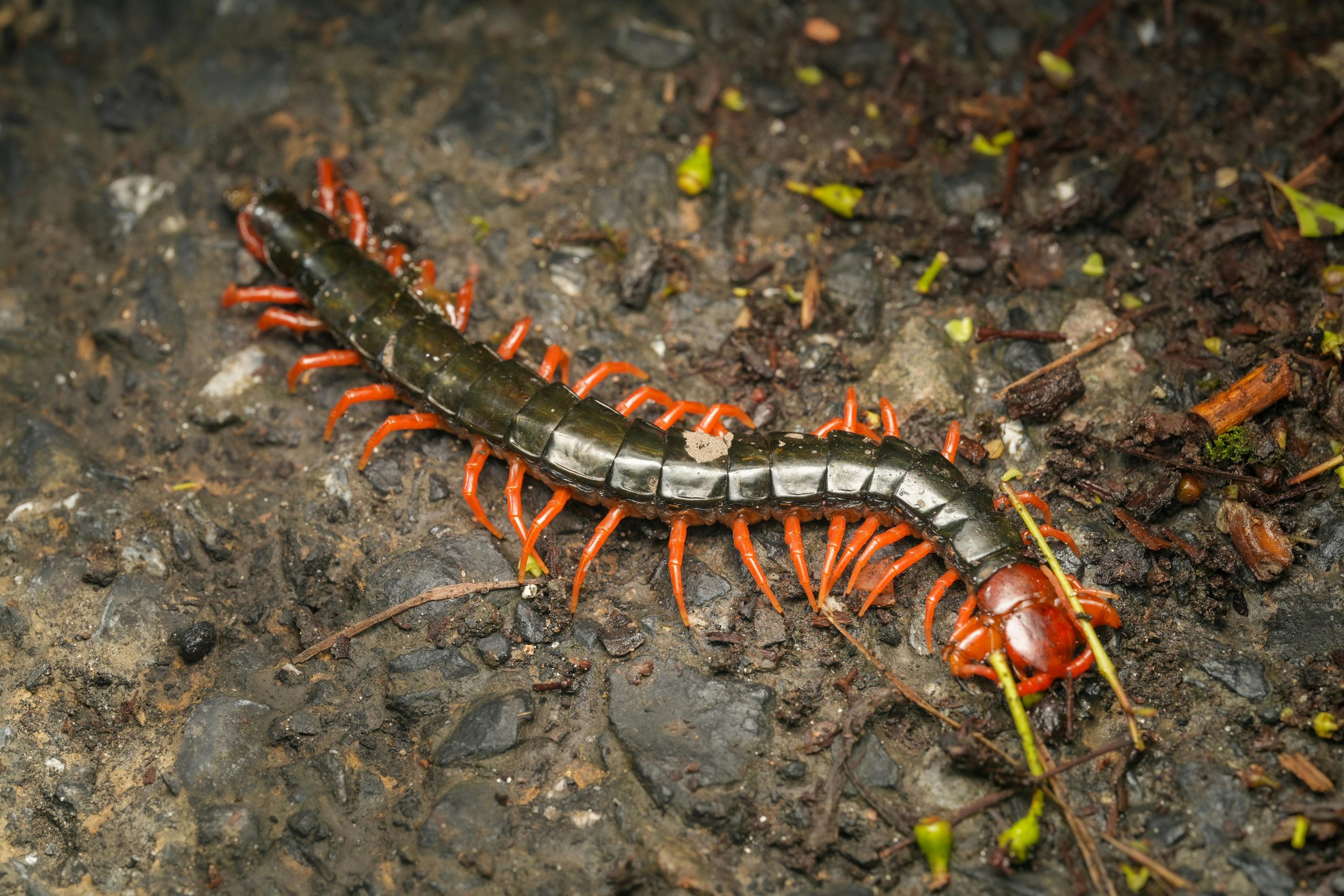Centipede: The Silent Hunter of the Soil
by Mark Hunt

Under rocks,?leaves, and garden soil, this little predator scurries. Shun the centipede, or you may find her around, and understand her role in maintaining the ecological equilibrium. Despite its numerous legs and fast-crawling action, this creature is an important ally for pest management and maintaining soil quality. Realising why it behaves?and what it entails allows one to see how nature balances itself.
Physical Features and Movement
The segmented, long, and flexible body of a centipede gives it a high degree of freedom of motion. This part has a pair of legs (the number varies by?species). With its tapering, slender form, it can?easily slide into tight spots. Their first pair of legs has been adapted into?venomous claws for prey capture. With effortless precision,?they glide forward in a swift, undulating motion as their legs work in unison, creating a wave of energy.
Their sensitive antennae detect vibrations and scents in their surroundings. This ability even allows them to hunt in pitch blackness. Centipedes tend to be nocturnal, and they hide under rocks, logs?and in moist soil during the day.
Diet and Hunting Style
A Centipede is a very efficient hunter. A natural pest, it?primarily feeds on insects, spiders, and other small invertebrates. Its venom is not fatal?to humans in most cases, but it acts quickly to paralyse prey. After being overpowered, the centipede feeds on its prey using its powerful jaws.
Centipedes (Difflugia) are entirely carnivorous — unlike worms?or millipedes. They hunt on instinct rather than patience, relying on speed and accuracy. They frequently lie in wait to ambush prey or,?with astonishing determination, chase it down. They are both predator and prey, which is what makes them great friends of gardeners and farmers, as they can help with insect problems naturally.
Habitats and Adaptability
The centipede is very adaptable, living in tropical forests, deserts, and urban gardens. Because their bodies lose moisture so quickly, they prefer to?hide in moist, dark areas. They can endure beneath the bark, blocks, and decaying foliage for their air, which can?stay wet.
Others adapt to?living indoors, taking up residence in basements or bathrooms. They scare us when we see them in our homes, but they do not usually harm us. Rather, they tend to eradicate pests such as cockroaches and termites, which they consider as?unwanted guests. Such natural pest control helps to?decrease the requirement for chemical treatments.
Life Cycle and Reproduction
Centipedes start life as eggs, which are laid in damp soil or protected spaces. Egg-laying varies between species, ranging from just a few eggs to dozens. The newly hatched young are miniature adults, except for the number of legs. They then moult, shedding?their outer covering and growing new body segments and legs at each stage.
In favourable conditions, its growth takes months?to years. Adult centipedes have a lifespan of approximately a few years, continuing the cycle of predator and prey. They are a long-lasting and hardy species, making them a stable presence in local?ecosystems.
Importance in Nature
Through their silent actions around us, centipedes help to?keep the balance. They prey on insects?and other small arthropods, thereby controlling species that may harm crops or plants. As they burrow through the soil and leaf litter, their activities also help to?aerate the soil.
Centipedes are a source of food for predators, such as birds, frogs, and small mammals. This, in turn, makes them?an important element of food webs throughout their ecosystems. If we remove them from ecosystems, we risk introducing their pestilence and upsetting this natural balance.
Human Perception and Coexistence
Centipedes help the ecosystem, but almost everyone?fears them. Their speed and number of legs seem to contribute to their vilification. However, if you know their habits, you can think less about whether they are hurt unnecessarily. The vast majority of?species do not pose a serious threat to humans. Bites are the?exception and are typically only mildly uncomfortable.
Cleaning and drying up the living spaces can prevent them from?entering the inside. Prevent encounters by sealing cracks and depleting?moisture. Leaving some natural cover in gardens allows them the ability to survive outdoors, where they belong. Supporting their role fosters a healthier and more balanced environment.
Conclusion
Although a centipede is a tiny creature that is often overlooked, it plays a functional role in nature, maintaining balance. A natural pest control?means that things are okay. To witness this graceful predator is to show?how the most mundane of organisms blend into the balance of life. Rather than being afraid of them, it helps to appreciate their place in nature — the complex systems that allow the planet to continue living.
Under rocks,?leaves, and garden soil, this little predator scurries. Shun the centipede, or you may find her around, and understand her role in maintaining the ecological equilibrium. Despite its numerous legs and fast-crawling action, this creature is an important ally for pest management and maintaining soil quality. Realising why it behaves?and what it entails allows…